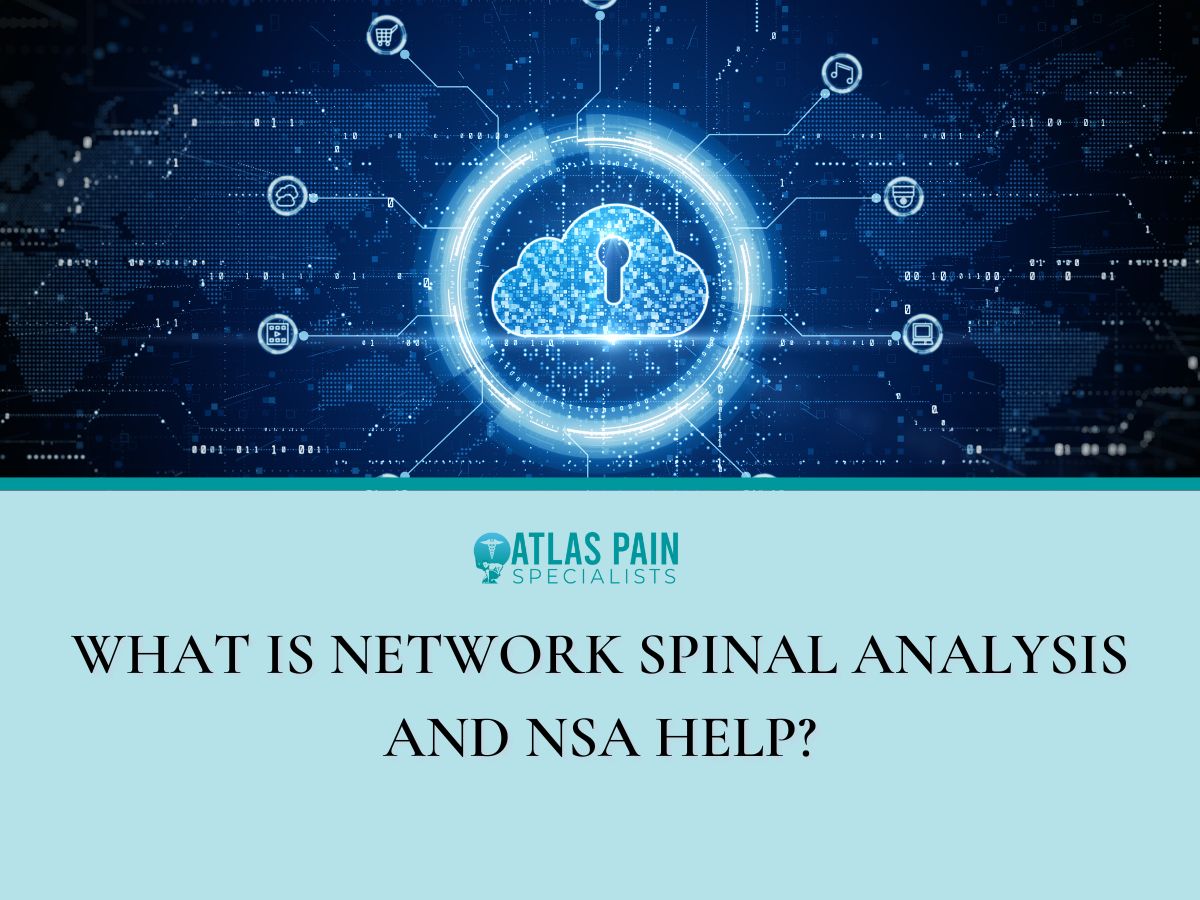

What is Network Spinal Analysis and NSA Help?
Wonder what Network Spinal Analysis (NSA) is all about? It's a game-changing approach to health and wellness that's helped a lot of individuals get better from things like chronic pain.
A gentle form of chiropractic care for people of all ages. This method employs energy-based techniques and moderate spinal manipulations to enhance the body's innate capacity for healing.
By taking this innovative approach to healthcare, professionals can improve patients' physical, mental, and emotional wellness. This blog introduces to Network Spinal Analysis, discussing its purpose, benefits, and procedure.
What is Network Spinal Analysis?

Network spinal analysis (NSA), often known as network chiropractic or network care, is a healing and wellness concept and practice derived from chiropractic. A network practitioner or NSA chiropractor uses light and specific pressure on the spine to trigger the nervous system and enhance the quality of life in patients.
Spinal and neurological system strain and trauma can be relieved with NSA treatment.
What do NSA chiropractors do?
Chiropractors who use NSA methods rely on the body's natural recuperative capabilities. An important part of NSA is learning to tune in to your own body and its inherent healing energy. The goal of the NSA is to foster and cultivate such a bond.
Working with an NSA chiropractor should give you a deeper understanding of your body and how to best care for yourself long-term. Pain, tension, and other symptoms of stress can all be alleviated with the help of an NSA chiropractor.
NSA can effectively address physical manifestations of emotional pain and trauma, thereby enhancing one's quality of life. After an NSA session, some patients report feeling a deep emotional release and a return of the body's natural flow of life force energy.
What makes NSA different?

Unlike other forms of spinal manipulation, NSA does not involve any violent jolting or cracking of the spine. Instead, NSA uses light but firm pressure along the spine to ease muscle tension and realign the body.
To achieve this, NSA practitioners apply pressure to the spine and other areas of the body using a wide range of techniques, bringing the body back into a state of balance and health. As a result, you may feel better overall and have more mobility and better posture.
We have listed the top benefits for you :
- Unique healing waves are promoted, which naturally relieve spinal tension and boost nerve energy.
- When compared to other methods of spinal manipulation, NSA is much less forceful.
- It is a gentle, non-invasive method that seeks to realign and balance the body as it was meant to be.
- Self-care and preventative measures are also emphasized to help lessen the likelihood of further harm.
- Significant amounts of pent-up emotional tension in the muscles are released as a result.
The net results of Network Spinal Analysis are:
- Spinal health and posture drastically improved.
- The stress on your muscles is reduced, and your joints are more mobile.
- A more positive frame of mind since pain changes your personality.
- Since the body is more likely to resort to self-healing mechanisms, less strenuous manipulation, exercise, and massage will be required.
Levels of Care in Network Spinal Analysis
Chiropractic care, known as Network Spinal Analysis (NSA), places special emphasis on the connection between the spinal column, the nervous system, and general well-being. There are two distinct types of treatment available, Entrainment and Wellness Care.
Entrainment Care
Entrainment is a network spinal "adjustment" performed by chiropractors. Entrainment is a term used by chiropractors in the network to describe how your whole being (mind, body, and spirit) will begin to heal and work together in perfect balance and harmony.
It's also possible that the network chiropractor isn't actually "doing" anything to the patient or "fixing" them through entrainment. Instead, healing is a collaborative process that requires the doctor and the patient to do their part.
Wellness Care
Wellness care is geared toward educating the patient about their own body and how to keep it healthy in the long run. Over the course of several visits, the doctor educates the patient on the causes of tension and how to relieve it through light physical activity.
As a result, the patient improves their posture and range of motion, experiences less pain, and benefits from overall better health. Reducing stress and increasing resilience are two additional benefits of receiving wellness care.
If you want to know when you should see a pain specialist for chronic pain, we have the answer for you.
Who gets Entrained? How do I know I'm the right candidate?
Anyone seeking better health and more rapid recovery can benefit. There are a wide range of reasons why patients seek out network spinal care.
- Some would like to see a resolution of their physical problems, such as those who suffer from spinal pain (neck pain or low back pain)
- Problems with muscle pain and the limbs (e.g., hip, knee, or shoulder pain)
- Problems with Headaches, sciatica, Chronic fatigue, and arthritis
People from all walks of life come here to work on their emotional and mental health. The following are characteristics of people who fall into this category: anxiety, depression, trauma, and either mental or physical stress.
Some clients also visit in an effort to"level up" or improve their health to realize their full potential. These individuals make health and well-being a priority in their daily lives, and they know there is no limit to learning and changing.
Why the spine?
Most of our body's regulating nerves are located in our spinal column, meaning that any problems with this area can have far-reaching effects on our mental and physical well-being. There is a widespread belief that emotional and physical stress is stored in the spinal cord and the meningeal sheath that covers it.
How does Network Spinal Analysis work?
In NSA, light touches on the back alter the vibrational tone of the spine (or tension). It is thought to help release pent-up stress in the mind or body that has been inhibited by the central nervous system.
Subluxations (misalignments of the vertebrae) can be corrected, and spine alignment is encouraged without the need for spinal manipulation or adjustment.
Certain points along the spine (termed "gateways") are targeted with light pressure or touch. These facilitate rhythmic, involuntary breathing and spinal muscle movement.
Surface electromyography studies have shown that the brain and spinal nerves change entrainments. The lines of communication between the brain and the body open up and become more direct. Subluxation, postural distortion, and muscle imbalances all start to heal on their own.
Is network Spinal a legitimate chiropractic technique?
Yes. In 1987, Dr. Donald Epstein established Network Spinal Analysis. It's one of the most studied forms of chiropractic care, and it takes an evidence-based approach to health. The University of California, Irvine, has been the site of extensive study.
Network spinal wave has also been studied as a potential central pattern generator. The American Chiropractic Association, the Council on Chiropractic Education, and the World Federation of Chiropractic all endorse NSA after extensive research.
Where Does Network Spinal Take Place?

The entrainment session typically lasts between 10 and 30 minutes and takes place on a chiropractic table in a chiropractor's office. It usually consists of light touches on the back, neck, and shoulders.
By stimulating the body's innate recuperative mechanisms, these touches help in reestablishing the body's normal, adaptive, and healing capacities.
What Does Network Spinal Analysis Look Like?
Patients on the network may be placed in a variety of positions while receiving treatment, including lying on their stomach, side, back, or seated.
In a standard chiropractic examination, the doctor will use their hands to feel the bone and the muscles supporting them, and perform several checks on the patient's legs. The network chiropractor may also use light touches to the spine in high-risk areas.
What are the differences between NSA and other therapies?
NSA is the only known method that boosts the body's natural healing mechanisms, unlike massage, cranial sacral, spinal manipulation, etc. Many patients have noticed an improvement in their strength in the face of hardship.
They're more at ease in their minds and make better decisions. The most noticeable changes are decreased back pain and an increased range of motion. Long-term improvement in a wide range of chronic illnesses is central to NSA care.
Schedule Your Visit
We'd love for you to experience the many benefits of focused, gentle, and natural NSA care with us. Here at Atlas Pain Specialists, we focus on providing non-invasive, drug-free treatment options to help our patients regain mobility and comfort.
If you're interested in finding out more, don't hesitate to get in touch with us right away. When you're ready, we'll be here to take care of you.
About Dr. Sean Ormond



